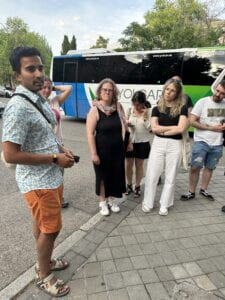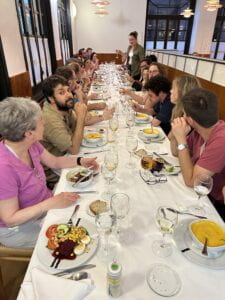The third day of the conference began early at 8.45am with the bus departure to El Escorial. As well as being geographically close, the combination of the two monumental sites El Escorial and the Valle de Los Cuelgemuros, the royal palace of the Felipe II and descendants, and the necropolis/monument built by the Spanish dictator General Francisco Franco, encouraged comparison and thinking about questions of ‘hispanidad’, imperialism, kingship, etc, particularly in the way General Franco consciously borrowed visual motifs from the palace. The day would conclude with dinner at the Residencia de Estudiantes, a major intellectual centre of Spain between 1910-1939 which closed at the beginning of the dictatorship but now remains an important site and archive for visiting scholars.
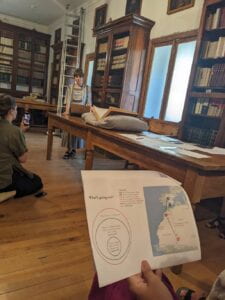
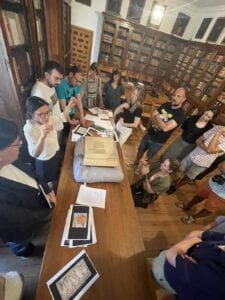
After visiting the grand library of El Escorial participants had the privilege of holding a panel in the manuscripts room, where graduate students Mathilde Montpetit (NYU) and Rosario Cornejo (UVA) discussed two extraordinary manuscripts. Participants were able to consult facismilies during the workshop. Mathilde explored the provenance of an extraordinary West African manuscript, held at El Escorial on kingship, originating in today’s Mali and travelling via Morocco to Spain. By examining the marginal annotations, Mathilde developed conclusions about the critical approaches Songhi and west African medieval thinkers developed towards popular Mediterranean ideas of kingship, contradicting typical ideas about the decline of political culture in West Africa after the conquest of Timbuktu. Rosario Cornejo worked on a lapidary and astrological manuscript, demonstrating how rulers examined constellations and other forms to divine the future. In particular, Rosario contradicted views arguing that rhetoric took place outside of science and only the arts, showing how a close analysis of not only iconography but of style, gesture, and other drawn and other manuscript details. Participants then went on a self-guided tour of El Escorial, viewing the basilica, crypt, hall of battles, bedroom of Felipe II, and courtyard.
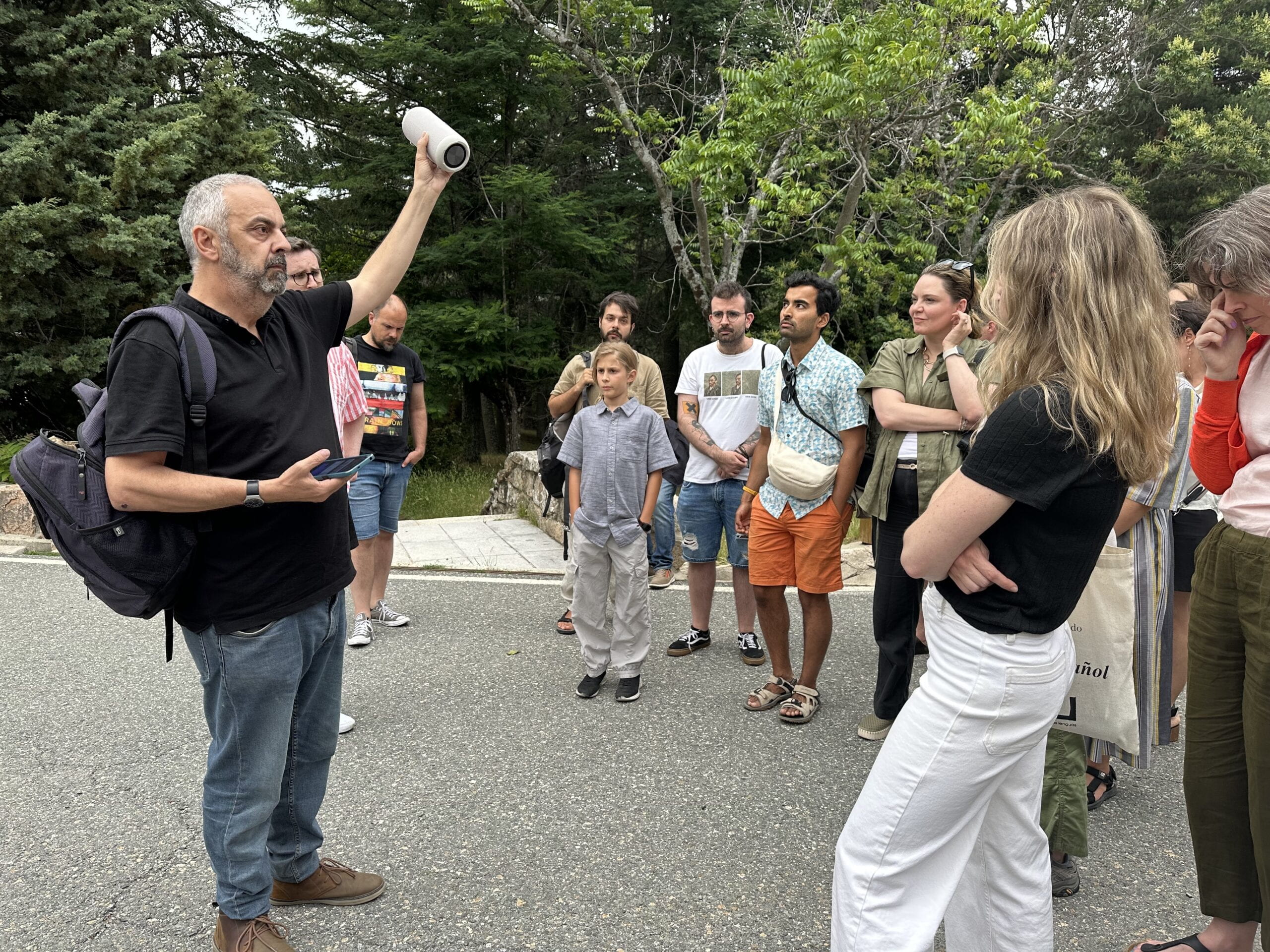
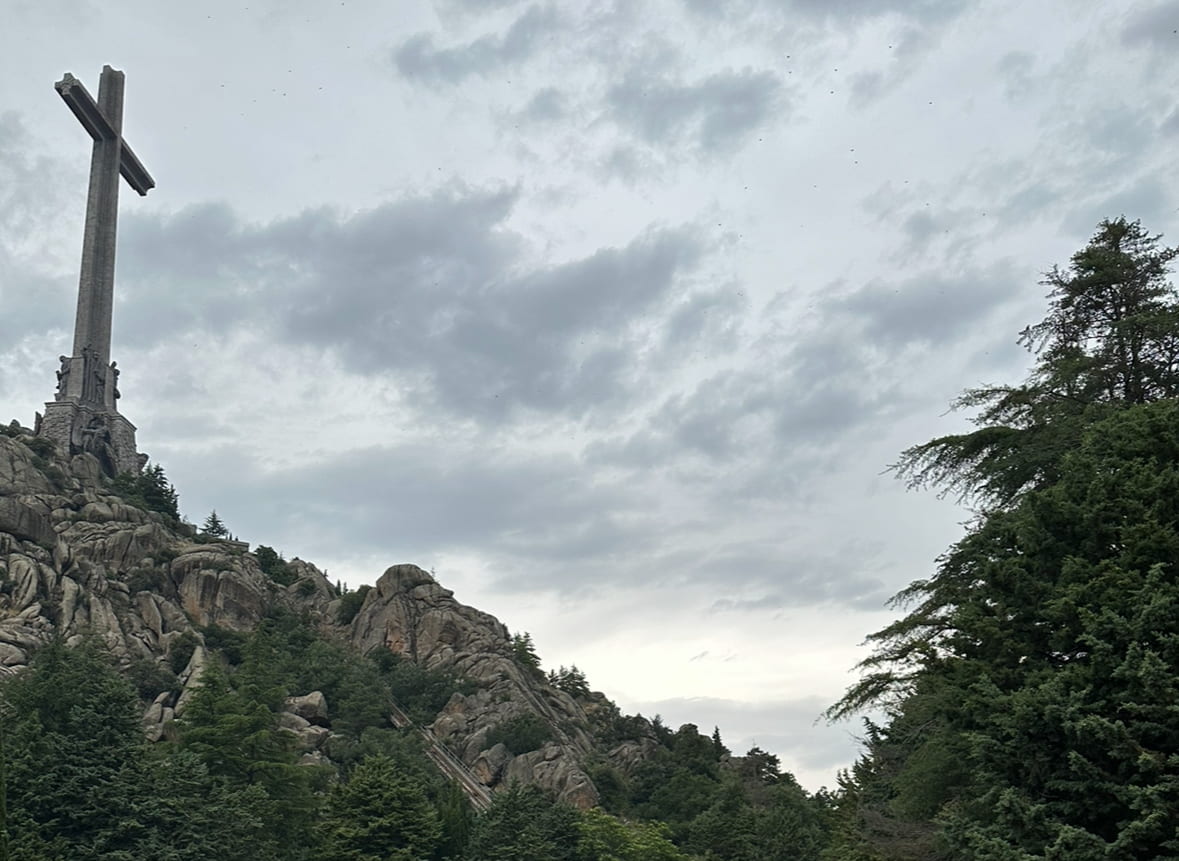
Participants then took the bus to the recently renamed Valle de los Cuelgamuros (before Caidos), the monument the dictatorship constructed, with prison labor, to the ‘fallen’ of the Spanish Civil Wasr, combining bodies of Republican and Nationalist soldiers in mass graves. This is surely one of the most chilling sites in Europe and across the world, as a dictatorship is presented more or less uncritically. We were very fortunate to have the President of the Association for the Recovery of Historical Memory (and frequent NYU Madrid collaborator) Emilio Silva, whose own grandfather was a political prisoner buried at the monument. The visit shows some of the uncomfortable continuities in the transition from dictatorship to democracy. After the visit, participants took a final bus to the Residencia de Estudiantes, the intellectual environment of the likes of Lorca, Dali, Bunuel, Ortega, and others, for a dinner and toast to the organizers to close the evening. (Ameya Tripathi)
